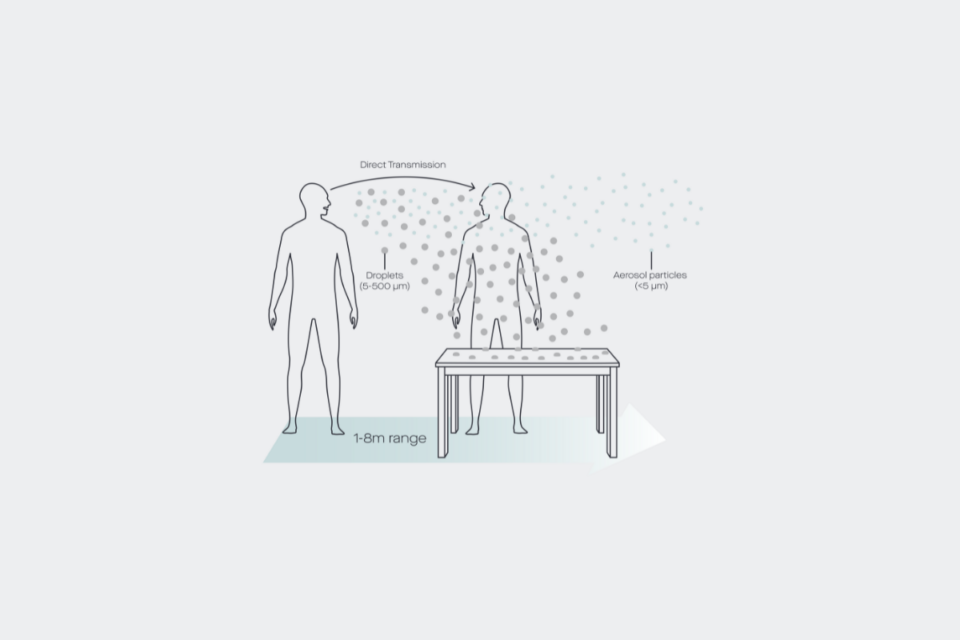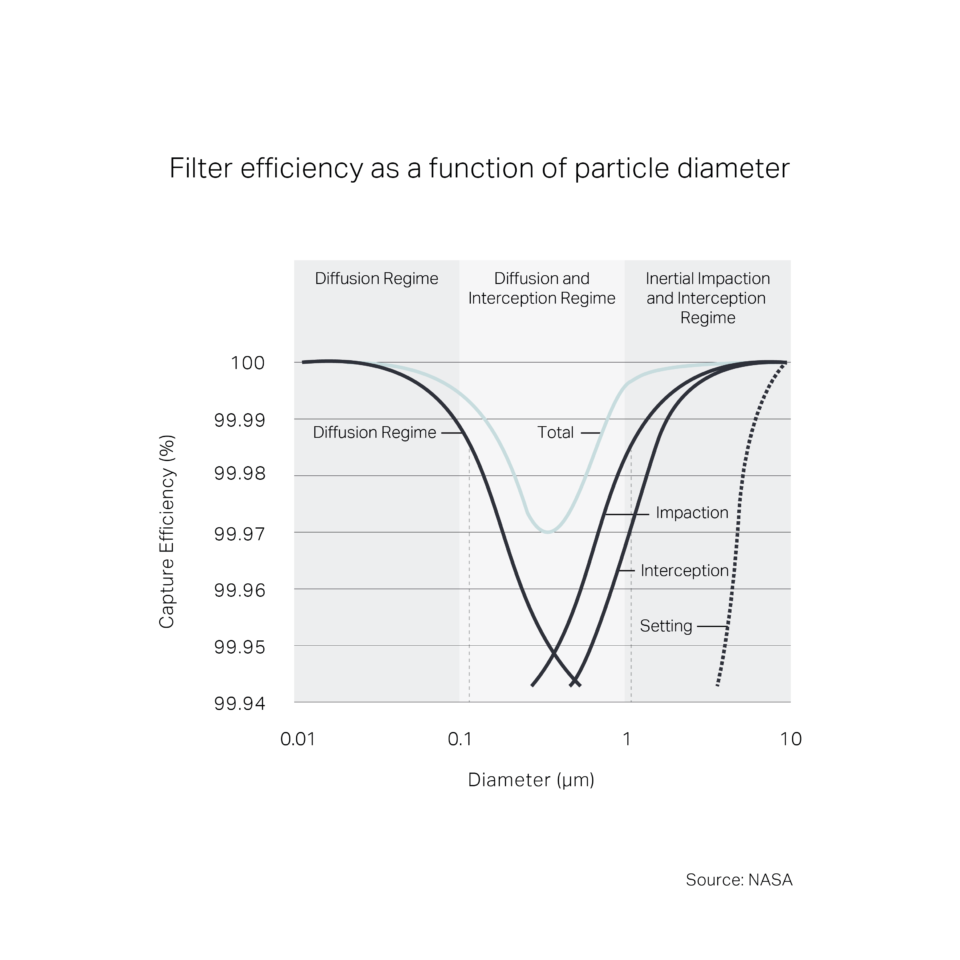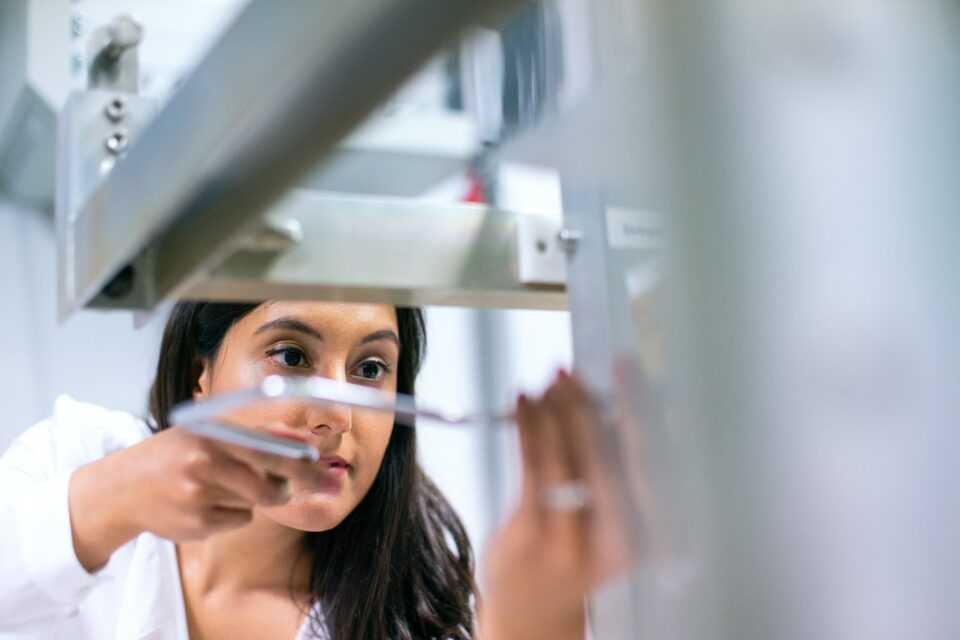
Covid-19
On April 30 2021, the World Health Organization (WHO) updated its guidance on Covid-19, placing far greater emphasis on inhaling airborne droplets (aerosols) than touching contaminated surfaces (fomites).
In early May, the Centres for Disease Control and Prevention (CDC) made similar changes to its Covid-19 guidance, now placing the inhalation of aerosols at the top of its list of how the disease spreads.

WHO guidelines
The WHO website now has a very different emphasis on how Covid spreads between people and also encompasses updated recommendations towards risk mitigation and ventilation.
It focuses on airborne transmission and downplays fomite transmission. This is in line with a recent CDC research paper suggesting that surface transmission is very low, with only a 1 in 10,000 probability. The emphasis on airborne transmission is echoed on the HSE website.
The WHO’s updated ventilation recommendations stipulate ventilation rates of: 160 litres per second per patient within healthcare settings; and 10 litres per second per person within non-residential indoor environments.

Air itself is the enemy
To fight infectious aerosols, the air itself is the enemy. That’s where Rensair comes in.
With a unique combination of H13 HEPA filtration and UVC light, our hospital-grade air purifier destroys a minimum of 99.97% of airborne viruses, including Covid-19, providing clean air for every person and enabling a safe return to work.
Further evidence of the efficacy of HEPA filtration and UVC light is available from trusted sources. The diameter of the SARS-CoV-2 virus has been found to range between 0.05 to 0.14 microns. Research by NASA proves that HEPA filters are highly efficient at capturing a broad range of particle sizes, including ultrafine particles below 0.1 microns in size, as well as fine particles. The larger sizes, for which effectiveness reaches 100%, are arguably more important as the virus is carried in airborne aerosol droplets, over 10 microns in size, that protect it from evaporation.
Having trapped the virus, it must then be destroyed: a recent study by the Henry Ford Health System shows that UVC light is effective for killing Covid-19 on N95 respirators. Since the threshold for Covid-19 infection is estimated at only 300 virus particles, whereas an inhaled viral infection typically requires 1,950 to 3,000 virus particles, the case for air purification is even stronger.

High-Efficiency Particulate Absorbing filtration (HEPA)
HEPA filtration is ideal for capturing Coronavirus particles, whether they are airborne aerosol particles or larger, directly transmitted droplets.
HEPA efficiency reaches 99.99% efficacy for:
- The typical size of Coronavirus aerosol particles (sub 0.1 micron)
- The typical size that Coronavirus particles are transmitted when enveloped in respiratory fluid (above 10 micron)
Between 0.1 and 10 microns, HEPA captures a minimum of 99.97% of virus particles.
In the graph opposite, note the blue line denoting ‘Total’. A more detailed technical explanation can be found in NASA’s report.

Danish Technological Institute
In March 2021, the Danish Technological Institute (DTI) conducted rigorous tests on the Rensair air purifier.
Particle reduction test
The objective of the first DTI test was to determine the unit’s performance in reducing the concentration of Covid-19 particles in the air. The method used active aerosolized MS2 bacteriophages as a proxy for SARS-CoV-2 (Covid-19). The result was a particle reduction rate of 99.98 % in 15 minutes and above 99.99 % in 30 minutes.
Particle destruction test
The second test was to determine the efficacy of the unit’s UVC light in destroying Covid-19 pathogens on the filter. Again, this used active aerosolized MS2 bacteriophages as a proxy for SARS-CoV-2 (Covid-19). The result was that no virus particles could be detected, thereby demonstrating the effectiveness of the UVC in destroying all traces of the virus.
